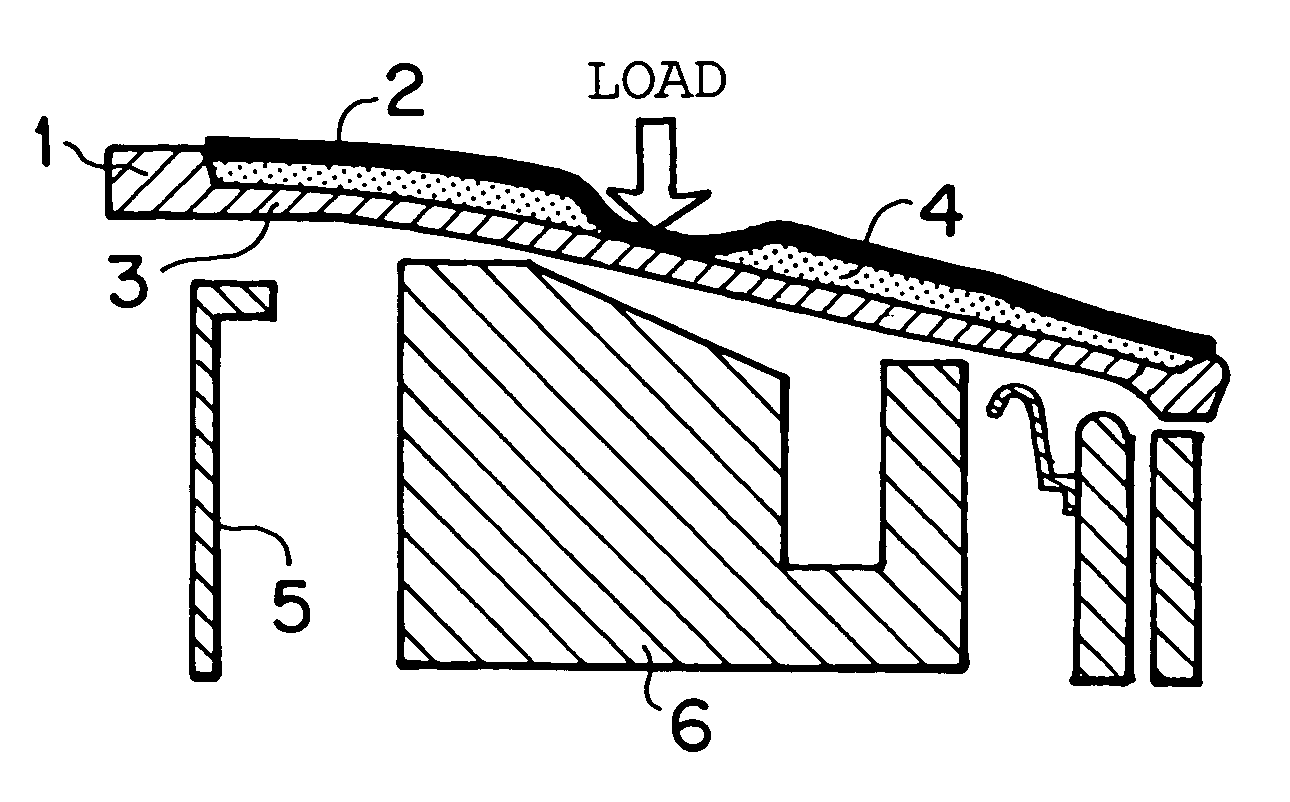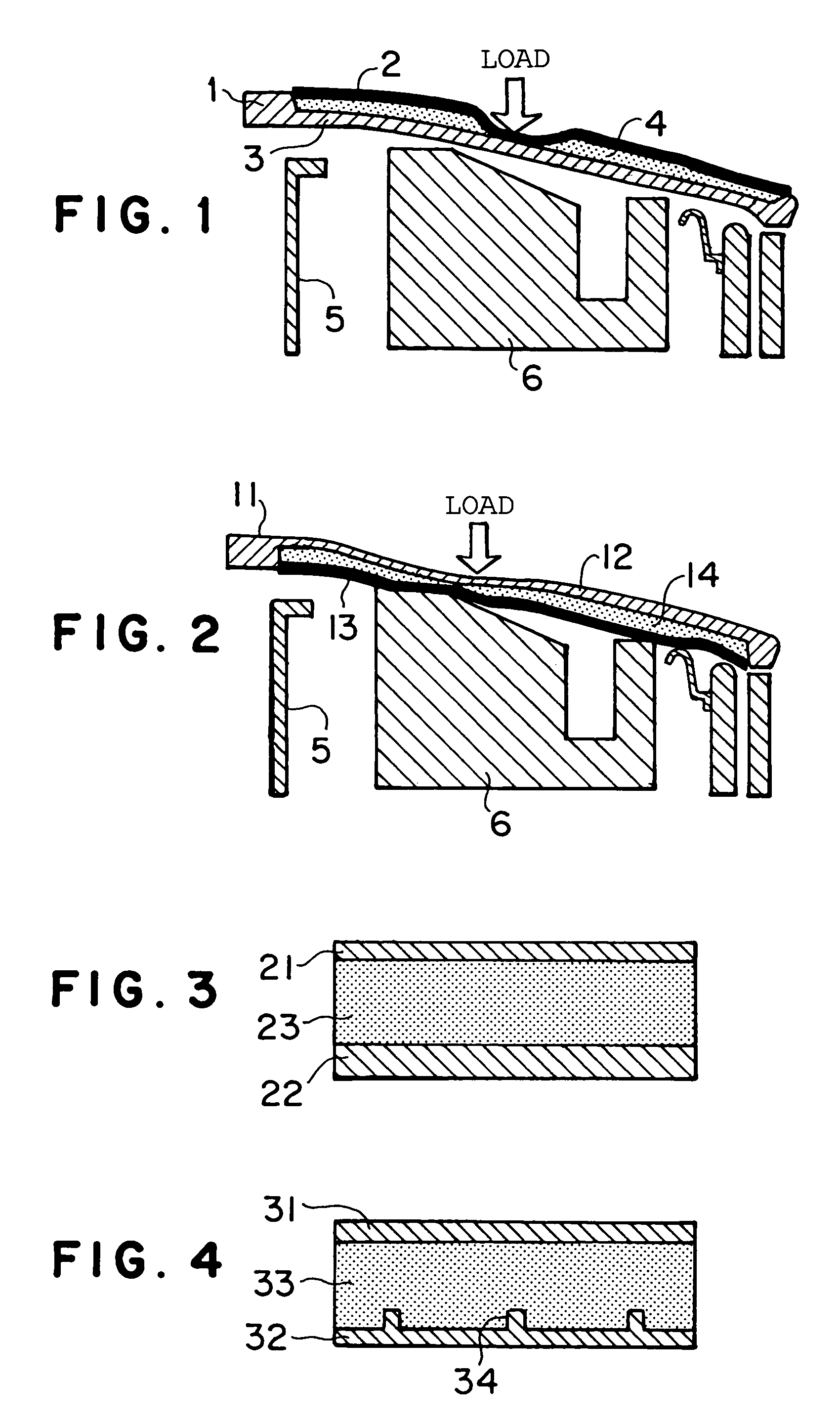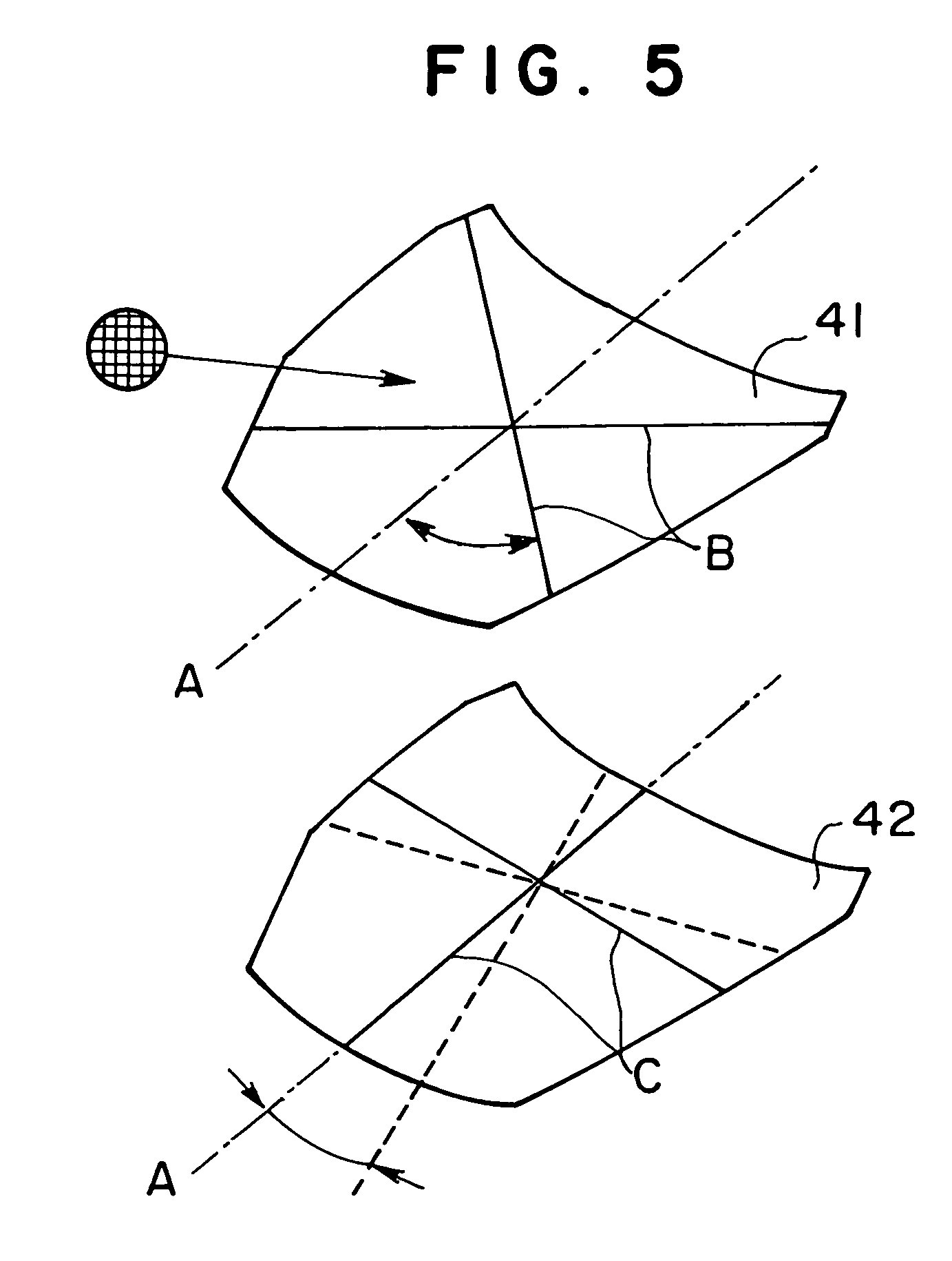FRP panel for automobile
a technology of fiber reinforced plastic and automobile, which is applied in the direction of roofs, pedestrian/occupant safety arrangements, vehicular safety arrangements, etc., can solve the problem of not proposing a crushable structure adequate for impact absorption, and achieve the effect of effectively absorbing impact, reducing impact, and reducing impa
- Summary
- Abstract
- Description
- Claims
- Application Information
AI Technical Summary
Benefits of technology
Problems solved by technology
Method used
Image
Examples
Embodiment Construction
[0109]Hereinafter, desirable embodiments of the present invention will be explained referring to figures.
[0110]FIG. 1 shows an FRP panel for an automobile according to an embodiment of the present invention, and in particular, shows an aspect when an impact load (for example, an impact load at the time of collision with a pedestrian) is applied from outside in a case where the present invention is applied to a bonnet of an automobile. In FIG. 1, symbol 1 indicates a bonnet as an FRP panel for an automobile, and in the shown example, the FRP panel for an automobile 1 is formed as a sandwich structure where a core material 4 made from an elastic material or a foam material is interposed between a surface-side FRP layer 2 (a first FRP layer) and a back surface-side FRP layer 3 (a second FRP layer) disposed with a gap. A difference in rigidity (difference in planar rigidity) is provided between these surface-side and back surface-side FRP layers 2, 3, and in this embodiment, the rigidit...
PUM
| Property | Measurement | Unit |
|---|---|---|
| strength | aaaaa | aaaaa |
| breaking elongation | aaaaa | aaaaa |
| thickness | aaaaa | aaaaa |
Abstract
Description
Claims
Application Information
 Login to View More
Login to View More - R&D
- Intellectual Property
- Life Sciences
- Materials
- Tech Scout
- Unparalleled Data Quality
- Higher Quality Content
- 60% Fewer Hallucinations
Browse by: Latest US Patents, China's latest patents, Technical Efficacy Thesaurus, Application Domain, Technology Topic, Popular Technical Reports.
© 2025 PatSnap. All rights reserved.Legal|Privacy policy|Modern Slavery Act Transparency Statement|Sitemap|About US| Contact US: help@patsnap.com



